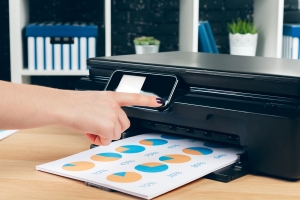In the intricate world of inventions and innovations, securing a patent is a crucial step for inventors who wish to protect their unique ideas and gain a competitive edge in the marketplace. Applying for a patent can be a daunting process, but with the right guidance and understanding, it can be navigated successfully. This detailed guide provides a comprehensive overview of the patent application process, offering key insights and strategic tips to enhance your chances of securing a patent effectively. click to find out more
Understanding the Basics of Patent Eligibility
Before delving into the application process, it is essential to understand what can be patented. A patent can be granted for a new invention or process that includes anything from new technologies, chemical compositions, business methods, or improvements to existing ideas. The primary criteria for patent eligibility are that the invention must be novel, useful, and non-obvious.
Preparing for the Patent Application
- Thorough Invention Documentation
The first step in preparing for a patent application is to document every aspect of your invention thoroughly. This documentation should include detailed descriptions, diagrams, and any other information that explains how the invention works and its unique features. Keeping a well-maintained inventor's notebook or log can be invaluable during this stage.learn the facts here now
- Conducting a Patent Search
Before applying for a patent, it is advisable to conduct a comprehensive patent search. This search will help you determine if your invention or a similar one has already been patented, which can save you time and resources if a similar patent exists. The United States Patent and Trademark Office (USPTO), European Patent Office (EPO), and other national patent offices provide databases for conducting preliminary patent searches.
Filing the Patent Application
- Choosing the Right Type of Patent Application
There are several types of patent applications, including provisional and non-provisional patents. A provisional patent application is less formal and can be a cost-effective way to secure a filing date while giving you an additional year to refine the invention and prepare for a non-provisional patent application. Non-provisional patents are more comprehensive and require detailed claims about your invention, which legally define the protection scope.
- Preparing the Patent Application
Preparing a robust patent application is crucial. This includes detailed descriptions of the invention, claims, abstract, and drawings if necessary. It is highly recommended to work with a registered patent attorney or agent to ensure that your application adequately and accurately represents your invention. They can also help navigate complex legal and technical requirements that could be pivotal in the approval process.
- Submitting the Patent Application
Once your application is prepared, submit it to the appropriate patent office, such as the USPTO or EPO. This process can now be done online, which simplifies the submission and tracking of your application's status.
After Filing the Patent Application
- Responding to Office Actions
After reviewing your application, the patent office may issue an "office action," which typically requests clarifications or changes to your application. Responding accurately and promptly to these inquiries is crucial in moving your application forward.
- Maintaining Your Patent
Once granted, maintaining your patent involves paying maintenance fees at predetermined intervals. Failure to pay these fees can result in your patent being deemed abandoned.
Conclusion
Applying for a patent is a detailed and often complex process but is essential for protecting your intellectual property. By thoroughly preparing and understanding the requirements and challenges of the patent application process, inventors can enhance their chances of success. With diligence, patience, and the right professional guidance, securing a patent for your innovation is an achievable goal.continue reading





